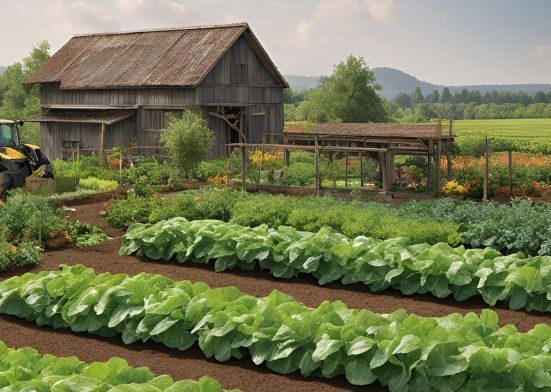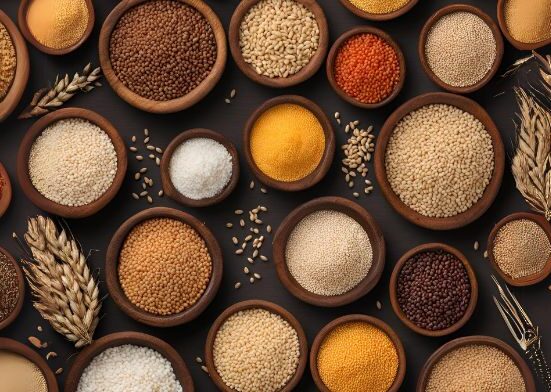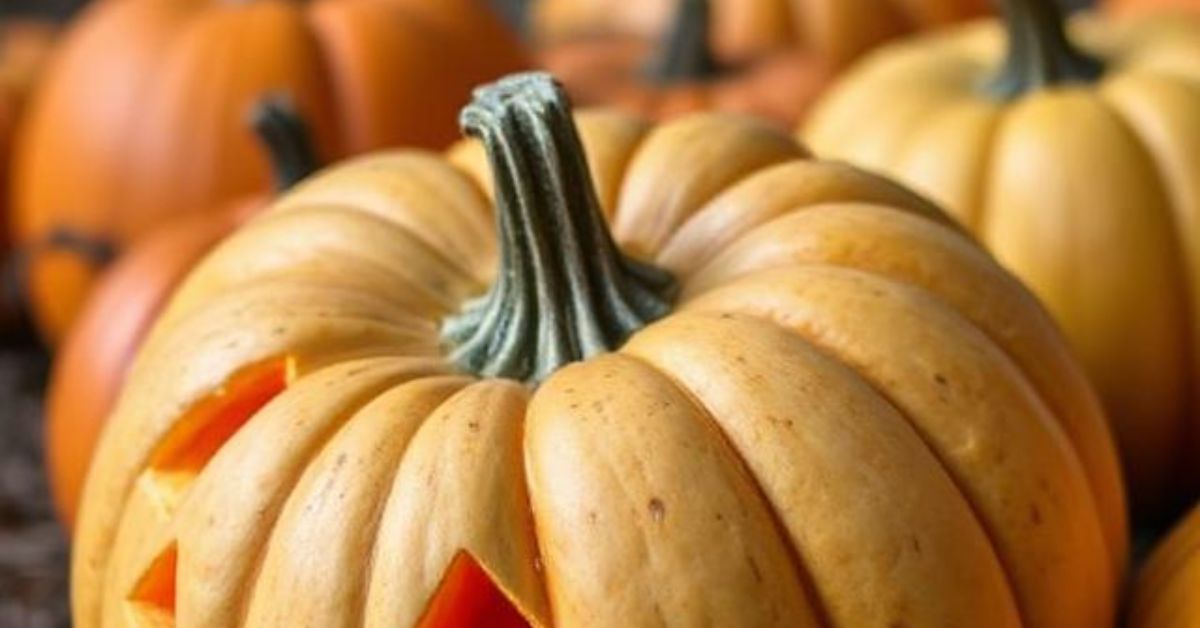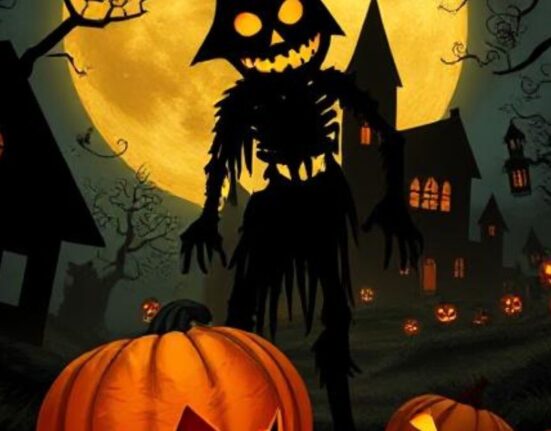Every October, pumpkins take center stage as leaves turn fiery hues and the air grows crisp. They adorn porches, flavor lattes, and, most famously, glow as Jack O’Lanterns, their carved faces flickering with eerie charm. But how did a humble gourd become synonymous with Halloween? The Pumpkins and Jack O’Lanterns story is a rich tapestry woven from ancient traditions, folklore, and cultural evolution. This blog post explores the roots of pumpkins. the legend of Jack O’Lantern, and how these elements merged to create one of Halloween’s most iconic symbols. Join us on a 2,000-word journey through history, myth, and the glowing legacy of Pumpkins & the Origin of Jack O’Lanterns.
What Were Jack-O’-Lanterns First Made From?
Believe it or not, jack-o’-lanterns weren’t originally made from pumpkins. The very first jack-o’-lanterns came from turnips and sometimes large potatoes or beets. This tradition dates back hundreds of years to ancient Celtic folklore in Ireland and Scotland, where people carved grotesque faces into these root vegetables. The idea was During Samhain, a holiday that marks the end of the harvest season and the beginning of the winter season, evil spirits are invoked to expel evil entities throughout Samhain. intensive vs extensive agriculture a time believed to blur the lines between the living and the dead.
One of the most popular legends behind the jack-o’-lantern is the tale of “Stingy Jack, ” a mischievous man who tricked the Devil and was doomed to roam the Earth with only a fire lit in a hollowed-out turnip to light his way. These eerie lanterns became known as “Jack of the Lantern, ” which eventually shortened to “Jack-o’-lantern.” When Irish immigrants arrived in America, they discovered that pumpkins, a native fruit, were much larger, easier to carve, and better suited for their lanterns. Over time, pumpkins completely replaced turns in the tradition, and the modern jack-o’-lantern was born — a glowing symbol of Halloween recognized worldwide.
The Pumpkin: A New World Marvel

Origins and Domestication
Pumpkins, scientifically known as Cucurbita pepo , are native to the Americas, with archaeological evidence suggesting their cultivation in Mexico as early as 7000 BCE. Indigenous peoples, including the Aztecs and various North American tribes, prized pumpkins for their versatility. The flesh was eaten, the seeds roasted, and the rinds used as containers or mats. Unlike the uniformly orange pumpkins we know today, early varieties were smaller, often green or yellow, and sometimes striped.
Pumpkins were a staple crop due to their hardiness and long storage life. They thrived in the “Three Sisters ” agricultural system, alongside corn and beans, where each crop supported the others’ growth. Corn provided support for the beans to ascend, and the beans deposited nitrogen into the soil. and pumpkins’ broad leaves shaded the ground, retaining moisture and deterring weeds.
Pumpkins Cross the Atlantic
When European explorers, including Christopher Columbus, encountered pumpkins in the New World, they were intrigued by this unfamiliar crop. Seeds returned to Europe in the 16th century, where pumpkins were initially a curiosity grown in botanical gardens. Over time, they gained popularity as a food source, especially in poorer regions, Organic methods to enhance soil fertility due to their ease of cultivation and nutritional value.
However, pumpkins didn’t immediately become a Halloween symbol in Europe. That role was reserved for another vegetable, tied to a much older tradition rooted in Celtic lore.
The Celtic Roots of Halloween
Samhain and the Spirit World
The origin of Halloween dates back to the Celtic festival of Samhain, which was celebrated around November 1st in what is now Ireland, Scotland, and parts of Wales. Samhain marked the end of the harvest season and the beginning of winter, when the boundary between the living and the dead was thought to be thinning. To ward off wandering spirits, the Celts lit bonfires and offered food to appease supernatural forces.
Carving vegetables into lanterns was a Samhain tradition, although pumpkins were not involved. Instead, the Celts used turnips, beets, or potatoes, hollowing them out and placing embers or candles inside to create glowing talismans. These lanterns were placed in windows or carried to guide lost souls or deter malevolent spirits. The eerie, flickering light became a hallmark of the season, setting the stage for the Jack O’Lantern.
The Legend of Stingy Jack
A Tale of Trickery
The name “Jack O’Lantern” comes from an Irish folktale about Stingy Jack, a notorious trickster whose cunning led to a peculiar fate. According to legend, Jack was a miserably drunkard who loved playing pranks. One day, he invited the Devil to share a drink, but, true to his name, Jack refused to pay. He persuaded the Devil to turn into a bill to cover the tab, and then locked the Devil away by putting the bill in his purse alongside a silver cross, preventing the Devil from retransforming.
Eventually, Jack freed the Devil, but only after securing a promise that the Devil wouldn’t claim his soul for ten years. When the decadence passed, Jack tricked the Devil again, convincing him to climb a tree to pick fruit. While the Devil was aloft, Jack carved a cross into the trunk, trapping him once more. In exchange for his release, the Devil promised never to take Jack’s soul.
Jack’s Eternal Wanderings
When Jack died, his sinful life swept him from Heaven. True to his word, the Devil refused to let Jack into Hell. Instead, he condemned Jack to wander the Earth forever, giving him only incandescent coal to light his path. Jack inserted the coal in a torn-out turnip . creating a makeshift lantern. Thus, he became “Jack of the Lantern, ” or Jack O’Lantern, a restless spirit whose glowing light was said to appear in marshes and bogs, luring travelers astray.
In Ireland, people began carving turnips and placing candles inside them, calling them “Jack O’Lanterns” of the legend. These lanterns were both a nod to Stingy Jack and a continuation of Samhain’s protective traditions.
From Turnips to Pumpkins
The Irish Diaspora
The Jack O’Lantern tradition crossed the Atlantic with Irish immigrants in the 19th century, particularly during the Great Famine (1845–1852), when millions fled to North America. In the United States, the immigrants discovered pumpkins, which were abundant, easy to grow, and far larger than turnips. Carving a pumpkin was much simpler than wrestling with a tough, woody turnip. By the mid-19th century, pumpkins had mainly replaced other vegetables in the Jack O’Lantern tradition.
Pumpkins and American Halloween
Halloween evolved in America, blending Celtic traditions with influences from other immigrant groups and local customs. By the late 19th century, it became a community holiday with parties, costumes, and decorations. Pumpkins, already a symbol of the fall harvest, fit perfectly into this emerging celebration. Their bright orange color and round shape made them visually striking, and their hollow interiors were ideal for carving intricate designs.
The term “Jack O’Lantern” was already familiar to Americans, not only from Irish folklore but also from earlier uses. In colonial America, “jack-o’-lantern” referred to a will-o’-the-wisp, a mysterious light seen in swamps, likely caused by methane gas igniting. Sustainable irrigation The carved pumpkin adopted this name, merging the Irish legend with a New World crop.
The Art of Carving Jack O’Lanterns

Early Designs
Early Jack O’Lanterns were simple, often featuring basic faces with triangular eyes and jagged mouths. The goal was to create a spooky effect, with candlelight casting shadows that danced in the dark. Over time, as Halloween grew more commercialized, carving became an art form. Families competed to create the most elaborate designs, from ghostly scenes to intricate portraits.
Modern Techniques
Today, pumpkin carving is a blend of tradition and innovation. Tools like serrated knives, scoops, and stencils make it easier to achieve professional-looking results. Some carvers use electric drills or woodcarving tools for precision, while others experiment with 3D sculpting, shaving layers of pumpkin flesh to create depth and texture. Social media platforms like Instagram and Pinterest display spectacular images. creations, inspiring amateurs and professionals alike.
Beyond aesthetics, carving is a communal ritual. Families gather to scoop out pumpkin guts and roast seeds and debate whether their Jack O’Lantern should be scary or silly. It’s a tactile, messy, and joyful tradition that connects generations.
Pumpkins Beyond Halloween
Culinary Uses
While Jack O’Lanterns steal the spotlight, pumpkins are culinary stars in their own right. Pumpkin pie, a Thanksgiving staple, has roots in colonial America, where settlers adapted Native American recipes. Today, pumpkin flavors everything from soups to smoothies, with canned pumpkin puree making it easy to incorporate into recipes year-round. Pumpkin seeds, Most profitable crops to grow, also known as pepitas, represent a nutritious snack. rich in protein and healthy fats.
Cultural Significance
Pumpkins symbolize abundance and the harvest, appearing in fall festivals, farmers’ markets, and decor. They’re the mascot of autumn, evoking nostalgia for hayrides, corn mazes, and cozy sweaters. In recent years, pumpkin patches have become destinations, offering photo ops and family-friendly activities.
Pumpkins also contribute to agriculture and sustainability. Their vines enrich soil, and leftover pumpkins can be composted or fed to livestock. However, the environmental impact of mass-produced pumpkins for Halloween has raised concerns, prompting some to advocate for locally grown or reusable decorations.
The Global Spread of Jack O’Lanterns
Halloween’s popularity has spread worldwide with the jack-o-lantern origins. Carved pumpkins are standard in countries like Canada, Australia, and parts of Europe, although local traditions sometimes influence designs. In Japan, for example, some carve pumpkins with anime-inspired faces. Halloween blends with Día de los Muertos in Mexico, and pumpkins may feature sugar skull motifs. Despite this global reach, the Jack O’Lantern remains distinctly tied to its Irish-American origins. It reminds us how cultural traditions evolve, adapting to new environments while preserving their core.
The Science of Glow
Ever wonder why Jack O’Lanterns look so magical? It’s all about light and perception. The candle inside a pumpkin creates a warm, flickering glow that contrasts with the cool night. The carved openings act like a stencil, directing light to form patterns our brains interpret as faces—a phenomenon called pareidolia. This makes even simple designs seem alive, enhancing the spooky effect. Modern Jack O’Lanterns often use LED lights instead of candles for safety and longevity. Some even incorporate colored lights or flashing effects, pushing the boundaries of the traditional lantern.
Preserving the Tradition
As Halloween continues to evolve, so does the jack o lantern tools. Community events like pumpkin-carving contests and illuminated trails keep the tradition vibrant. Meanwhile, artists and engineers experiment with high-tech versions, from laser-cut pumpkins to animatronic displays. Yet, the heart of the Jack O’Lantern lies in its simplicity—a carved gourd, a flickering light, and a story that spans centuries. It’s a testament to human creativity and our love for stories that blend mischief, mystery, and the supernatural.
How to Carve the Perfect Jack O’Lantern

Carving the perfect jack-o’-lantern can be a fun and creative Halloween tradition. Whether you’re a first-timer or a seasoned pro, follow these steps to create a spooky masterpiece!
Choose the Right Pumpkin
Choose a pumpkin with a smooth surface and a sturdy stem. A firm, fresh pumpkin is easier to carve and will last longer once carved. For a traditional jack-o’-lantern, look for medium to large pumpkins with a good, flat base for stability.
Gather Your Tools
You don’t need fancy equipment to carve a pumpkin. The basics include:
- Carving kit: A small, serrated knife, scoop, and scraper are essential.
- Large spoon or ice cream scooper: For cleaning out the pumpkin’s insides.
- Permanent marker: To outline your design before cutting.
- Pumpkin carving template (optional): You can find free templates online for intricate designs.
Prepare the Pumpkin
Cut a hole around the pumpkin’s stem to create a lid. Angle your knife so it’s easier to put the lid back on later. Scoop out the seeds and stringy pulp, Drone technology in agriculture scraping the walls as clean as possible for a better glow.
Draw Your Design
Use a marker to sketch your design on the pumpkin. Whether you go for a classic face or something more elaborate, having a clear plan will help guide your carving.
Start Carving
Using your carving knife, gently cut along the marked lines. Take your time, as rushing can lead to even cuts. For detailed areas, make minor, careful cuts. If you make a mistake, it’s easy to fix by trimming slightly.where did jack o lanterns come from
Add the Finishing Touches
After carving, place a candle or battery-operated light inside to give your jack-o’-lantern that iconic glow. For extra flair, you can add decorations like glitter or colored lights around the base.
Conclusion
The fascinating tale of pumpkins and jack-o’-lanterns brings together history, folklore, and creativity, making them an integral part of Halloween traditions. From the ancient Celts who carved faces into turns to the Irish immigrants who introduced the custom to America, the evolution of the jack-o’-lantern has traveled through time and across cultures. While the pumpkin has become the quintessential choice for carving today, it’s fascinating to think of its humble origins as a tool for warding off evil spirits. Not only do jack-o’-lanterns add to the spooky atmosphere of Halloween, but they also bring families and communities together through the joy of celebration. carving and decorating. Whether it’s a classic grinning face, a spooky monster, or an intricate design, each carved pumpkin tells a unique narrative and evidences the creativity of the maker.
Pumpkins, too, are far more than just Halloween decorations. Their seeds are nutritious, their flesh is delicious, and their hollowed-out shells can be composted, making them a sustainable choice for the environmentally-conscious. So, this Halloween, grab a pumpkin, carve out your favorite design, and keep the jack-o’-lantern tradition glowing brightly for generations to come.
FAQ
Why did people initially carve turnsips instead of pumpkins?
Turnips were used because they were more readily available in Europe. The tradition originated in Ireland, where turnips were carved to ward off evil spirits during the festival of Samhain.
How did pumpkins become the leading choice for jack-o’-lanterns?
When Irish immigrants came to America, they discovered pumpkins were larger, easier to carve, and more abundant, making them the perfect replacement for turnips in jack-o’-lanterns.
What is the significance of the jack-o’-lantern’s glow?
The glowing jack-o’-lantern was initially believed to ward off evil spirits. It was based on the legend of Stingy Jack, who used a lantern to navigate the darkness after his soul was condemned.
Can you eat the pumpkins used for carving?
You can eat the pumpkins used for carving, but they are typically not as flavorful as those grown for cooking. Still, the flesh can be used in soups, pies, or roasted dishes.
How long does a carved pumpkin last?
A carved pumpkin generally lasts between 3 and 5 days, depending on the climate and weather conditions . Warm, humid environments can cause them to decompose faster, while cooler, dry conditions can help preserve them longer.








